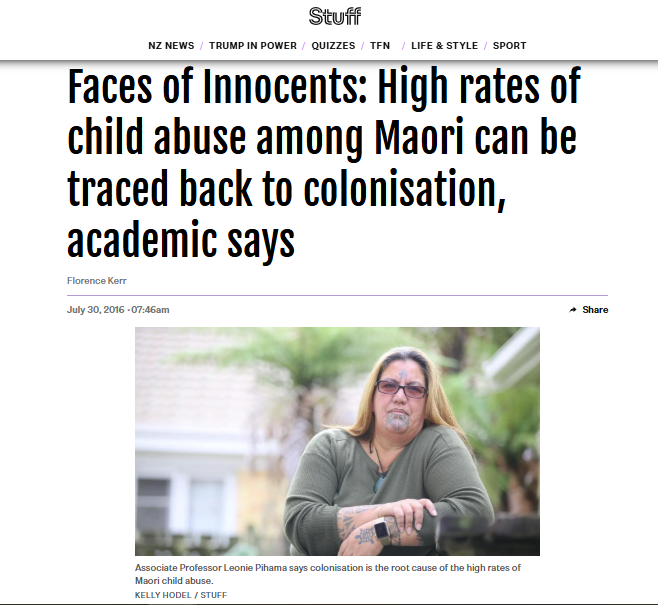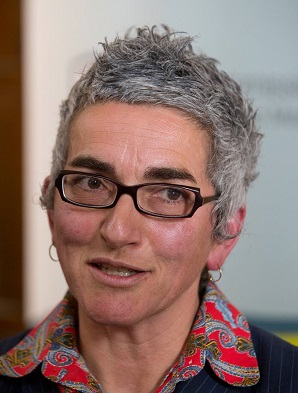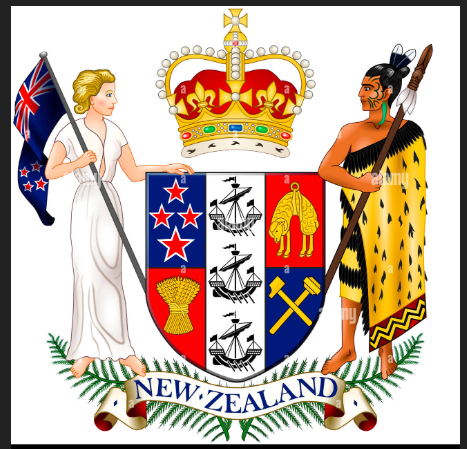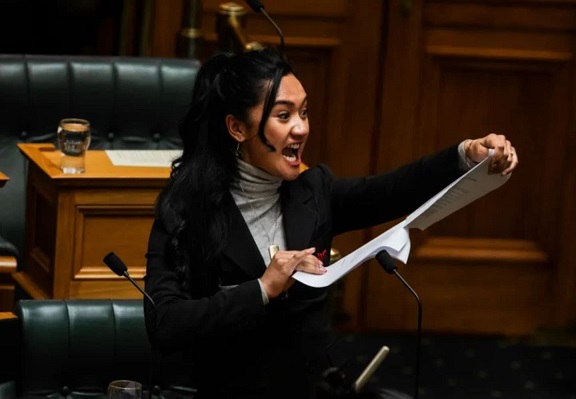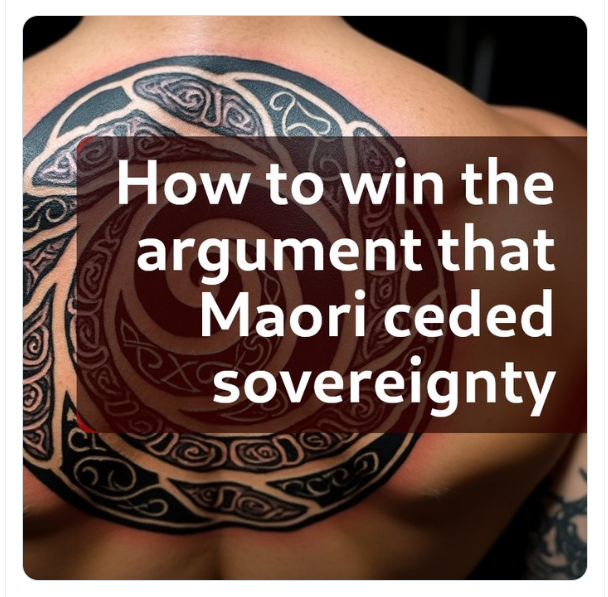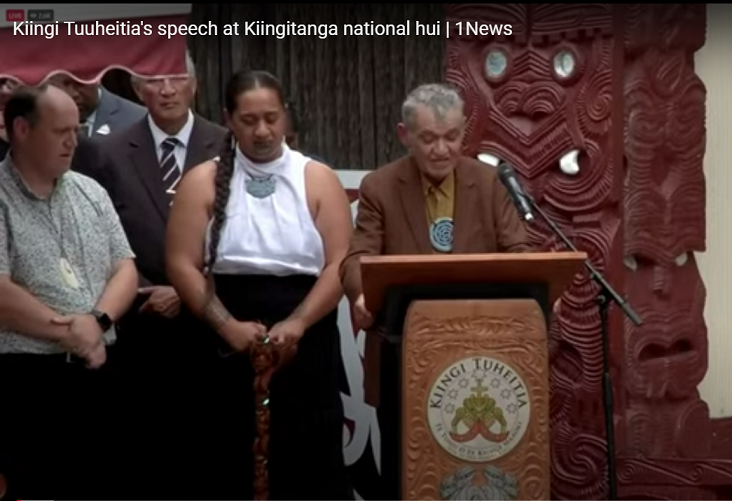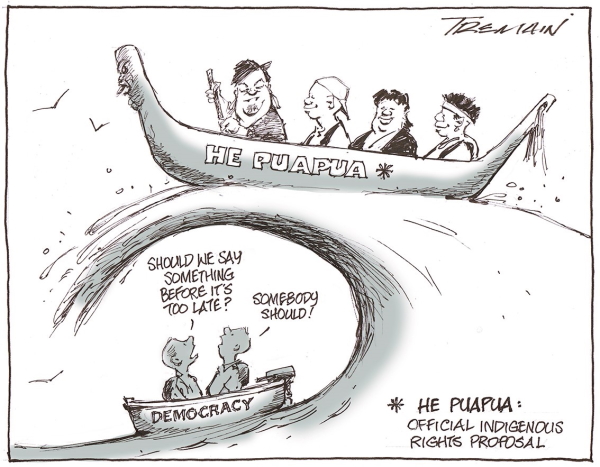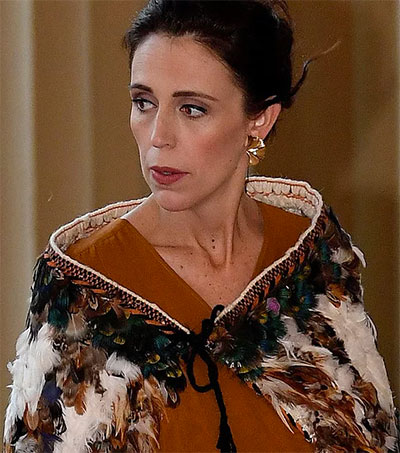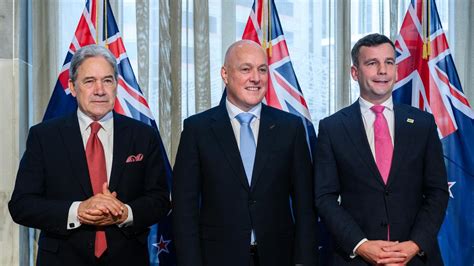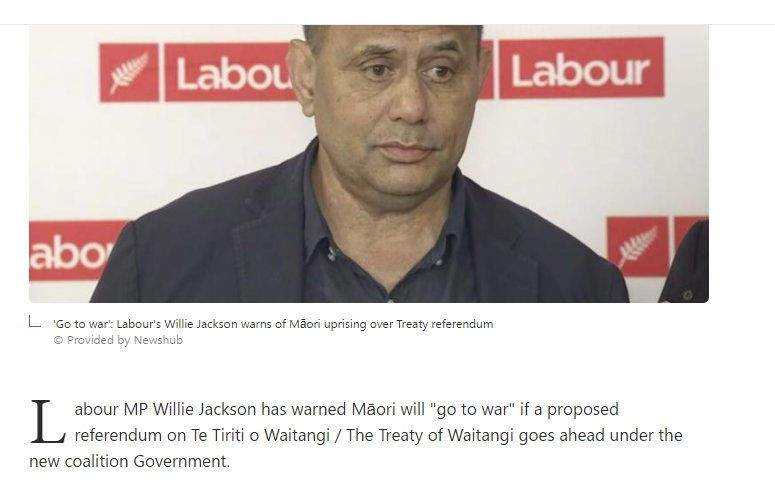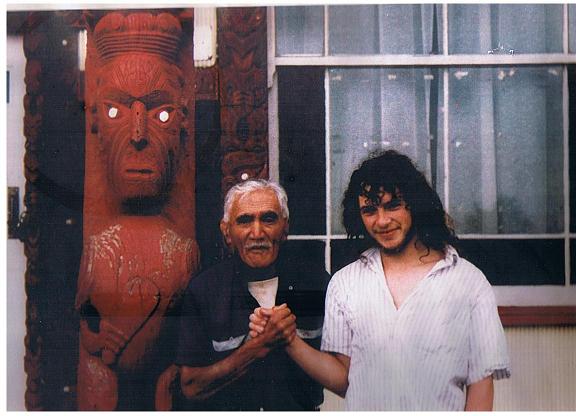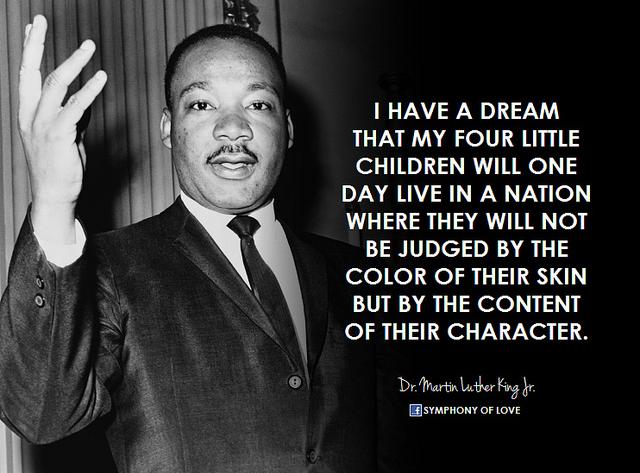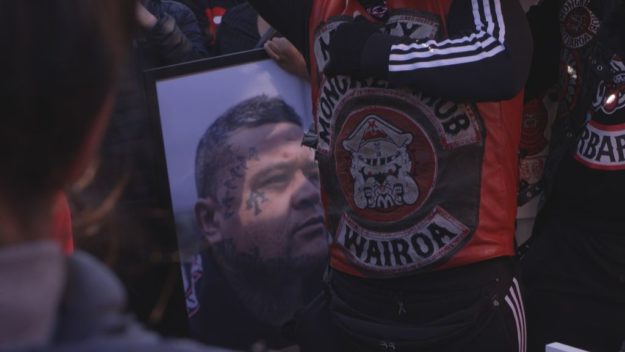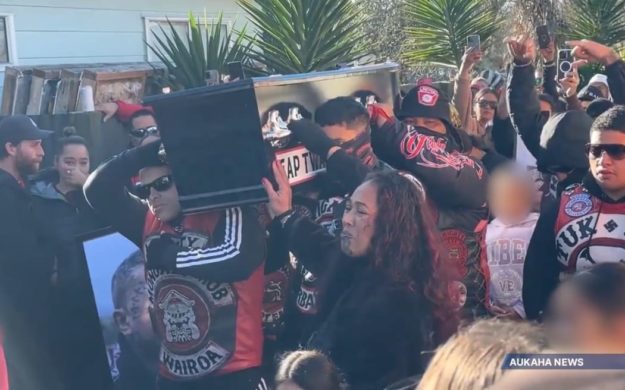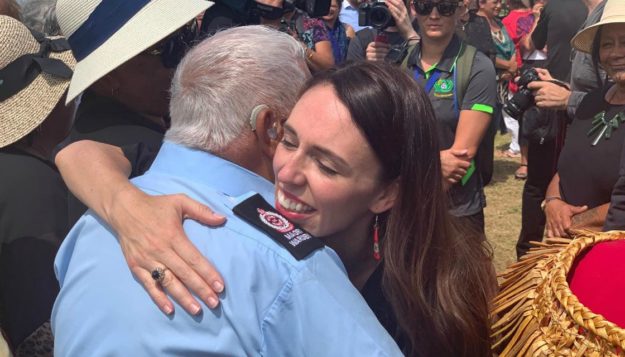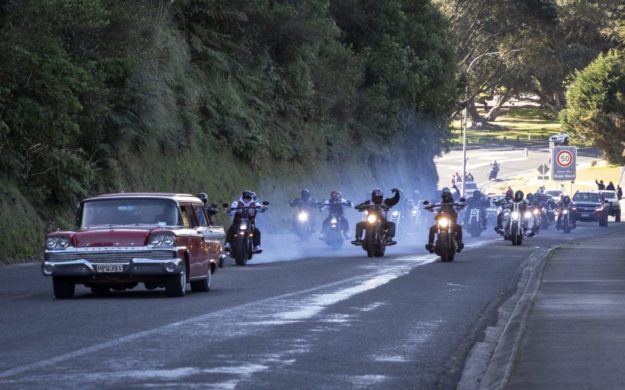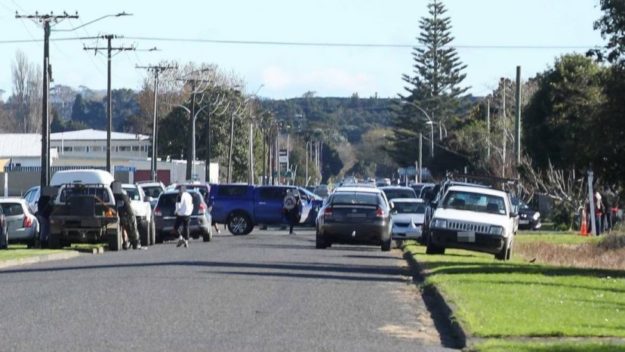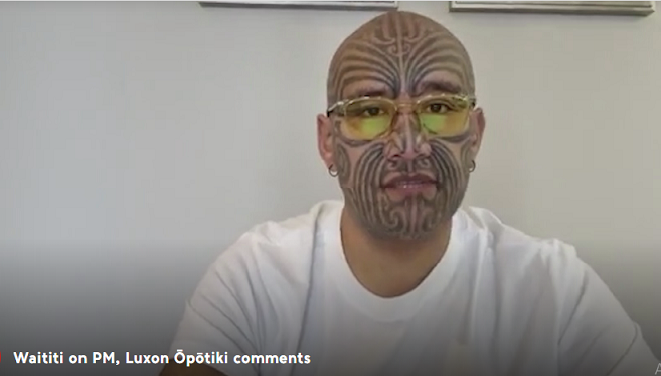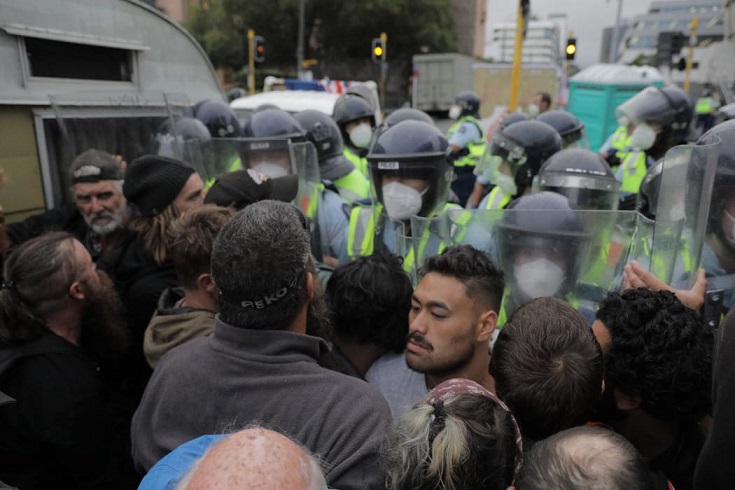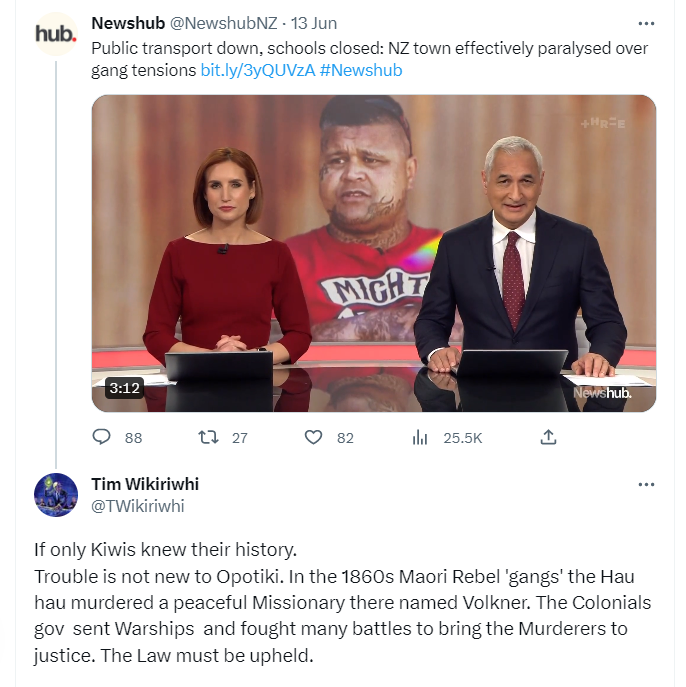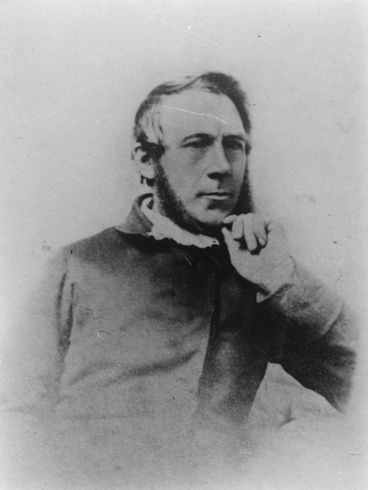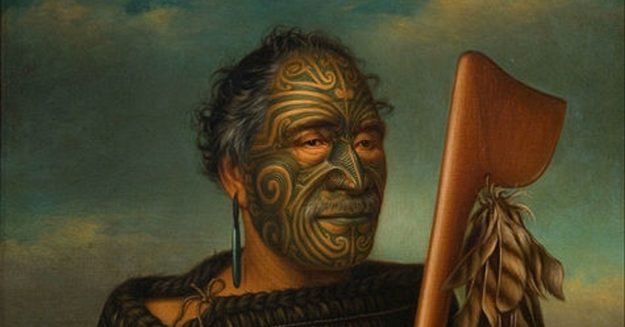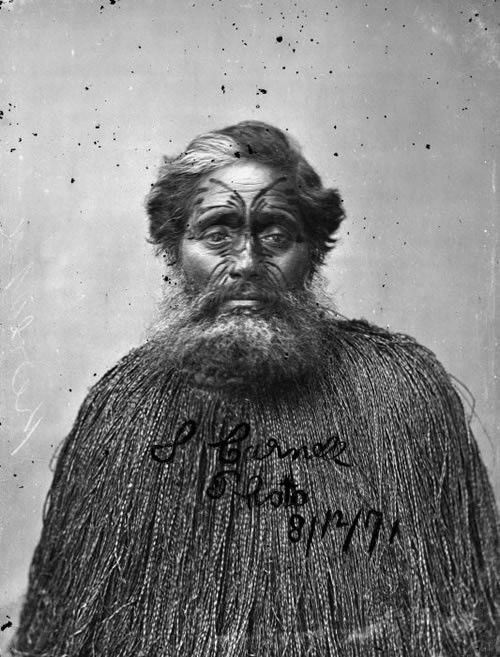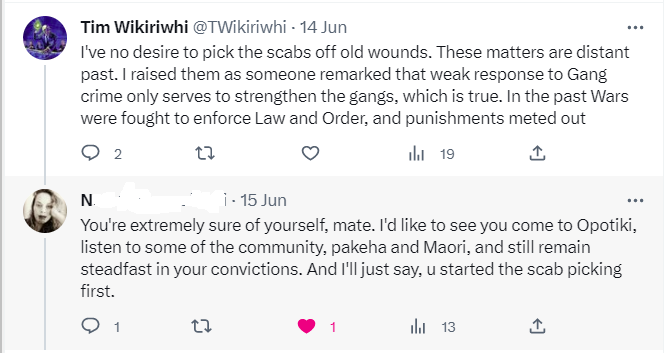Bill Ludbrook sent me a copy of his submission in support of Act’s Treaty Principles Bill, and gave me permission to share it here at Eternal Vigilance and elsewhere.
It is significant in that Bill steps up in defense of the true meaning of Te Tiriti O Waitangi… translated from the English ‘Littlewood Draft’… by the hand of his Great Great Grandfather… Chief Missionary Henry Williams in 1840.
Henry Williams looms large in this pivotal period of our nations history.
It is outrageous that modern revisionists place themselves… and their interpretation of the meaning of Maori Words over and above this Great man who was not only contemporary with the times, but also his Brother ‘William Williams’ authored The Maori Dictionary!
As Bill says in his submission… “Henry Williams will be ‘turning in his grave’ at the current absurdities of the situation.”
Bill also makes a very truthful claim about the Treaty being ‘Redundant’… It ought to be… yet that is a discussion for another hour.
The debate today is about what is the true meaning of the Treaty?
Why are the ‘Treaty Principles’ enacted in 1975 False?
Read Bill’s sub (below)…
Tim Wikiriwhi
Christian Libertarian.
To: The Select Committee – Treaty Principles Bill Submission.
Dated: Monday 2nd December 2024.
Introduction:
My name is William (Bill) Ludbrook and I am a descendant of Henry Williams.
I support David Seymour’s Treaty Principles Bill, because it uncomplicates an ancient Maori document that nobody understands, if they ever did understand it at any given time?
In February 1840, New Zealand’s first Governor, Captain William Hobson of England, asked Henry Williams to translate Queen Victoria’s Treaty offer to New Zealand, into the Maori language to become known as “Te Tiriti o’ Waitangi”.
Summary:
The Te Tiriti o’ Waitangi in its existing form, has now become redundant.
It remains controversial, it is ineffective, it is shameful, it is embarrassing, it is divisive, and it does not represent New Zealanders well in 2024 or 184 years after its date of execution between Rangatira and New Zealand’s first British Governor William Hobson in 1840.
My grandfather of two greats, Henry Williams, will be ‘turning in his grave’ at the current absurdity of the situation in New Zealand regarding “his Tiriti o’ Waitangi”
The ‘twisting and changing’ interpretations of our foundation document in New Zealand, by the Waitangi Tibunal and others, has been dramatic, inaccurate, and unacceptable!
The representatives of Queen Victoria would never have signed a Treaty in Queen Victoria’s name, without guaranteeing her full Sovereignty over that colony. To say otherwise is part of the absurdity emanating from some sectors of NZ today.
The Treaty of Waitangi was translated into the Maori language in 1840, for one solitary reason, and that is Rangatira Maori did not understand any language except the Maori language, especially as something as important as a Treatywith the British Royal Crown!
Obviously today in 2024, it is an entirely different proposition.
Every single Maori on this planet clearly understands the English language.
Henry William’s Maori version, referred to as te Tiriti o’ Waitangi, was signed by over 500 Maori Chiefs and Ariki throughout the country of New Zealand.
Only 39 Chiefs signed Queen Victoria’s English version.
To answer the reasons for this, we need to go back to the Treaty of Waitangi and compare what the English Treaty said originally, with what tribal representatives, ‘inept Waitangi Tribunal members’, and many ‘history ignorant’ politicians today say it says.
The final English draft from which the Treaty in Maori was written by Henry Williams, is called the Littlewood draft.
It has this name because this draft was given to a lawyer by the name of Henry Littlewood by James Busby and Hobson to check over the Treaty draft in English.
Henry Littlewood who was present in the Bay of Islands in the 1830s and 1840s is presumed to have had some association with the actors involved in the signing of the Treaty of Waitangi. This said document is written on paper watermarked as 1833 and is dated 4th of February 1840. This was the day Henry Williams was given the Treaty to translate into Maori. It has also now been confirmed as being in Busby’s handwriting. Therefore, the Littlewood Treaty draft in English, mirrors the official versions.
It went missing and was found in Auckland in 1989 (Nineteen Eighty-Nine) among family records belonging to the descendants of Henry Littlewood.
“The Fair Colony” (By Bruce Moon, New Zealand, Historian and Author, Second Edition, p6) confirmed it was the final original English draft. However, under pressure from activists, aided by various politicians, it was quickly taken out of sight by government officials and hidden away to this day.
When one compares the Treaty in Maori with the Littlewood Draft, we could say they are identical.
This is how historians can tell it was the Littlewood final draft that was used to draw up the Treaty in Maori by Henry Williams in 1840.
If you want to know what the Treaty in Maori says in English, then read the Littlewood draft.
Following, are the three Articles of the Treaty from this said Littlewood draft.
These articles are simple, and very easy to understand.
Preamble:
“Her Majesty Victoria, Queen of England in her gracious consideration for the Chiefs and people of New Zealand, and her desire to preserve them their land and to maintain peace and order amongst them, has been pleased to appoint an officer to treat with them for the cession of the Sovereignty (sic) of their country and the islands of their country and of the islands adjacent to the Queen.
Seeing that already many of her Majesty’s subjects have already settled in the country and are constantly arriving, and that it is desirable for their protection as well as the protection of the natives to establish a government amongst them.
Her Majesty has accordingly been pleased to appoint me William Hobson a Captain of the Royal Navy to be Governor of such parts of New Zealand as may now or hereafter be ceded to Her Majesty and proposes to the Chiefs of the Confederation of United Tribes of New Zealand and the other Chiefs to agree to the following Articles”:
Article One:
“The Chiefs of the Confederation of United Tribes, and other chiefs who have not joined the Confederation, cede to the Queen of England forever the entire Sovereignty of their country”
Article two:
“The Queen of England confirms and guarantees to the Chiefs and the tribes and to all the people of New Zealand, the possession of their lands, dwellings, and all their property. But the Chiefs of the Confederation of the United Tribes and the other Chiefs grant to the Queen, the exclusive rights of purchasing such lands as the proprietors thereof may be disposed to sell at such prices as may be agreed upon between them and the person appointed by the Queen to purchase from them”
Article 3.
“In return for the cession of their Sovereignty to the Queen, the people of New Zealand shall be protected by the Queen of England and the rights and privileges of British subjects will be granted to them” end.
That is a clear, uncomplicated, easy to understand, Treaty of Waitangi.
Yet, what do we see today? A toxic culture of division being perpetrated by activists who are only interested in causing resentment. Instead of celebrating the benefits of a shared heritage, one that includes Western advancements that raised the standard of living for everyone. These agitators push for separatism. Co-governance, race-based laws, and constant demands for ‘decolonisation’ are going to rip our social fabric apart.
Here’s the truth: no nation can survive on the basis of two separate legal systems, one for one race and one for another. That’s not equality, it’s apartheid, plain and simple. And what makes it worse, is that this divisive ideology is being peddled under the guise of liberal ‘justice’. It’s not liberal and it’s not justice, it’s Maori supremacy, brought to you mainly by a number of present day new generation Maori.
We need to reject this path and embrace the only principles that made New Zealand a success: equality before the law, individual rights, and a shared national identity. We should respect Maori heritage, but respect isn’t achieved by bending the knee to historical grievances or rewriting the rules of governance to privilege one group over many others.
Maori culture, like Western culture, is worth preserving, and not through racial favouritism or endless guilt-tripping about colonisation. It’s preserved through genuine pride, mutual respect, and the recognition that we’re all citizens of the same country.
Kiwis are some of the most patriotic people you’ll ever meet. There’s a pride that runs deep in this country, pride in our way of life, pride in the freedoms we enjoy, and pride in the fact that we’ve created a society which, despite its flaws, is still one of the best in the world to live in. We’re fiercely protective of our home, our culture and our shared history.
So, when we talk about Maori and Pakeha relations, it’s important to remember that the vast majority of New Zealanders, regardless of their background, are united in their love for this country.
They want a future where we can all live side by side as equals, without the need
for separate laws or separate systems of governance.
This isn’t about ignoring the past or rejecting the Treaty, it’s about building a future that reflects the reality of what New Zealand is today: a diverse but unified country, where every person, regardless of their ancestry, has the same rights and accountabilities.
The reality is, most Kiwis want the same thing, respect for Maori culture and respect for our European heritage which gave us a parliament (and everything else). It’s time to stop using history as a weapon to divide us. New Zealand should be better than this.
I support David Seymour’s Treaty Principles Bill simply for reasons of clarity.
Also, what appears as conceivable and sensible and reasonable, is we already have a perfectly clear Treaty of Waitangi currently in our possession in the form of the said “Littlewood draft” which is already in the English language and will inevitably be clearly understood by every single New Zealander.
This may not be accepted because it may conjure an absurdity of being too simplistic, too easy, and too sensible to consider. On the other hand, it may be seen in the spirit and simplicity it is written.
Background to the author of this submission:
Archdeacon Henry William’s daughter Caroline, was my grandfather, Henry Ludbrook’s Mother.
My family were all born and bred on the same ‘sacred land’ at Pouerua, Pakaraka, and Taiamai, Bay of Islands, which Henry Williams purchased from 16 powerful Ngapuhi Chiefs and Ariki, including Hone Heke, in 1833.
Dr Aidan Challis of the Science and Research Division of the Department of Conservation, describes Pouerua as a “World Class Cultural Monument”
In his 20 years involvement with ‘Heritage Protection’ he says that “Pouerua and the main cone and associated lava, is a historical landscape of outstanding significance”
He says “Although there were once large horticultural Maori settlements throughout New Zealand, all but Pouerua have been destroyed”
“This special place” has a unique ancient archaeological history that has been designated by famous researchers as being one of the world’s largest, most intact unspoilt archaeological sites, anywhere in the world!
Dr Aidan Challis said “It could be likened to Hadrian’s Wall in England, or the Pyramids in Egypt, or the Colosseum in Rome, dating back to around 1200AD.
“It remains intact and unspoilt as it was during human (Maori) occupation hundreds of years ago”
“Pouerua, through the benign management practices of the Williams and Ludbrook families for 191 years has meant full protection of Pouerua has been allowed to occur”
Ownership of this subject land was passed down to Henry William’s Ludbrook grandsons over many generations.
Parts of this special place are still farmed by the Ludbrook family to this present day in 2024.
Closing comments:
Henry Williams, as an ex Royal Navy officer, arrived in NZ in 1823 from Britain to Head the Church Missionary Society of New Zealand.
In subsequent years, in 1840 he was to become known and revered by Maori throughout New Zealand for his courage as a Missionary and peacemaker, and always his intentions and willingness to help Maori deal with the tidal wave of lawless European pakeha settlers around this time.
He was recognised by Maori throughout the country and early settlers in New Zealand as being fearless. He feared his God and therefore had no fear of men.
On February 6th 1840, 40 Ngapuhi Chiefs signed the Treaty of Waitangi, at Waitangi, Bay of Islands, Northland, New Zealand.
Queen of England Victoria’s English version was translated into Maori by the Head of the Church Missionary Society of New Zealand, Henry Williams, and it has been known in this country ever since as Te Tiriti o’ Waitangi.
Any weak-kneed approach to the Treaty Principles Bill from anyone is exactly what NZ does not need!
At a time when Kiwis are yearning for strong leadership, that stands up for unity and fair-mindedness, Hon. David Seymour appears to possess all of those qualities required for these purposes!
Bill Ludbrook
Pakaraka,
Bay of Islands, New Zealand.
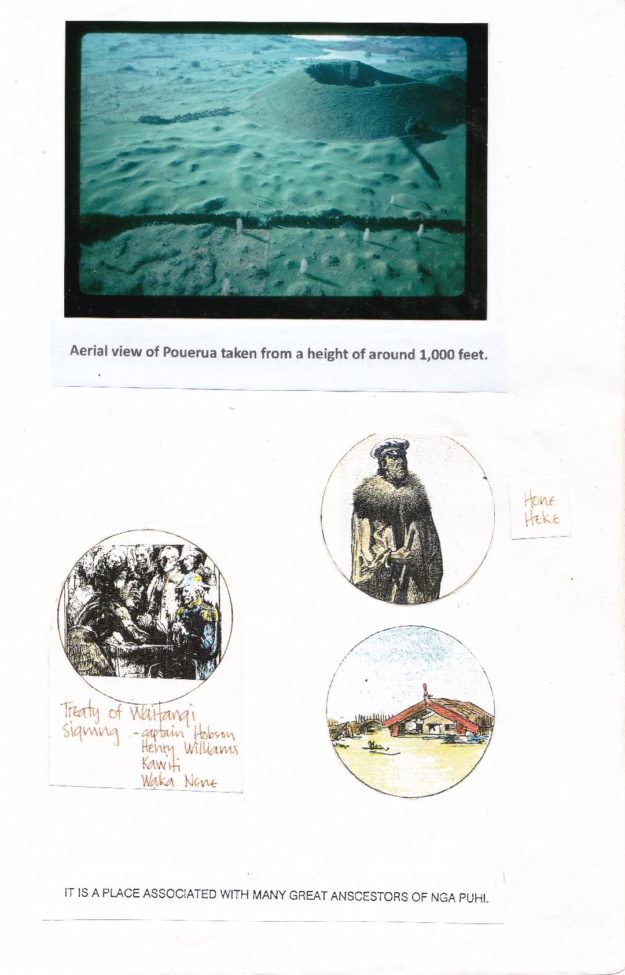
More from Tim…
Principles of The Treaty Of Waitangi Bill. Submission By Tim Wikiriwhi.
Big Hui: Kingites Plot Social Unrest To Maintain Racist Treaty separatism @ Turangawarwae .
A Submission In Opposition To The Electoral (Entrenchment Of Maori Seats) Amendment Bill
TIM WIKIRIWHI’S SUBMISSION TO THE NEW ZEALAND GOVERNMENT’S CONSTITUTIONAL REVIEW. 2013
MT EVEREST IS FOR WIMPS! LETS CONQUER APARTHEID GOVERNMENT IN NEW ZEALAND! A STRATEGY.
UNIVERSAL PRIDE IN WASHINGTON, SEPARATIST SHAME IN WELLINGTON.
THE GREAT WAITANGI SWINDLE.
STOP WITH THE LIES AND BLAME! MAORI NEED TO TAKE RESPONSIBILITY FOR THEIR OWN SHOCKING CRIME STATISTICS.
WAR IN THE WAIKATO. REBUTTAL OF THE O’MALLEY REPORT FOR HAMILTON CITY COUNCIL WITH REGARDS TO THE PROPOSAL TO CHANGE THE NAME OF OUR CITY TO KIRIKIRIROA.
WAITANGI DAY 2023: TRUE NEW ZEALAND HISTORY: CAPITAN GUSTAV VON TEMPSKY WAS A GREAT MAN OF HIGH CHARACTER… A HERO WHO GAVE HIS LIFE FOR OUR COUNTRY.

